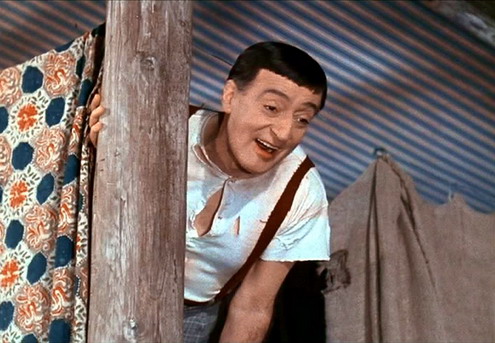 |
 |
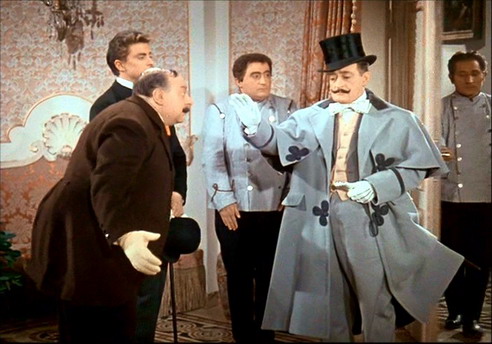 |
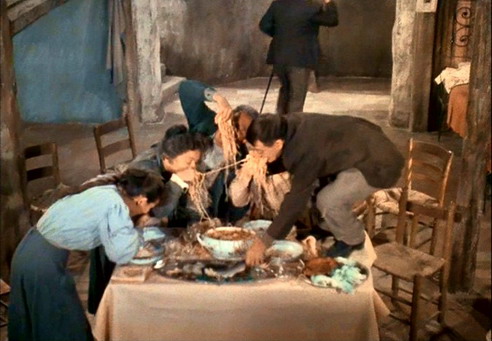 |
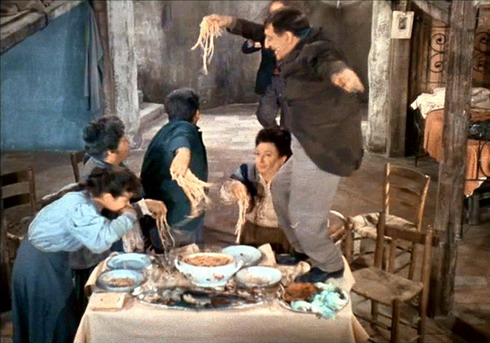 |
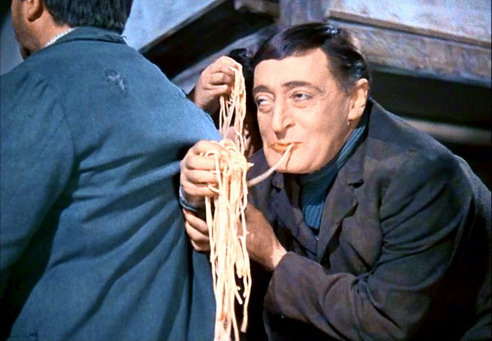 |
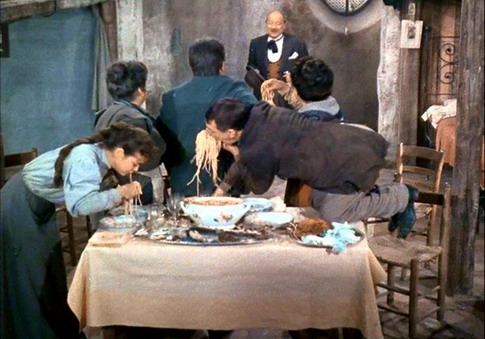 |
 |
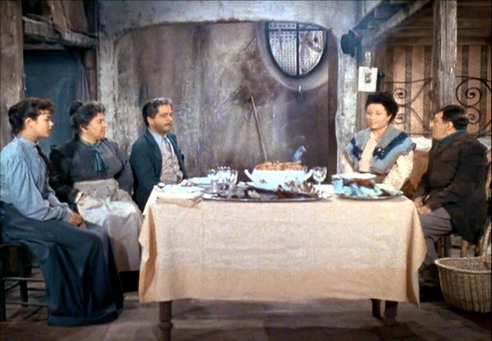 |
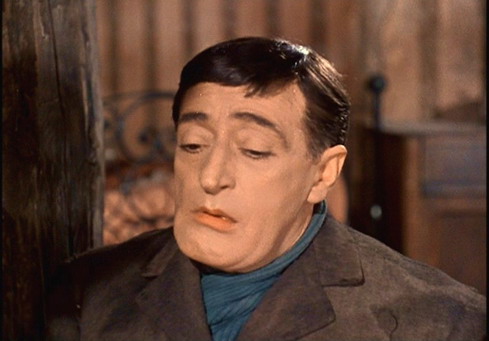 |
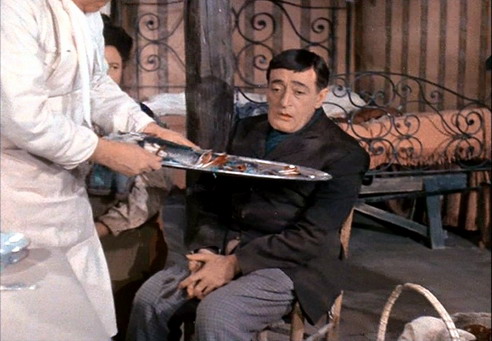 |
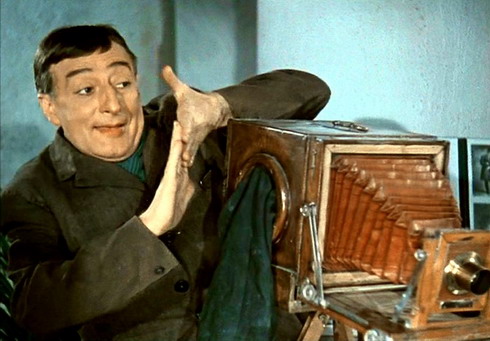 |
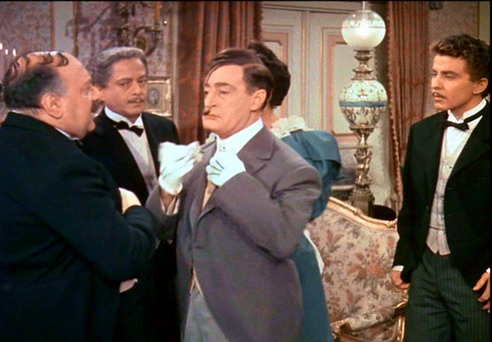 |
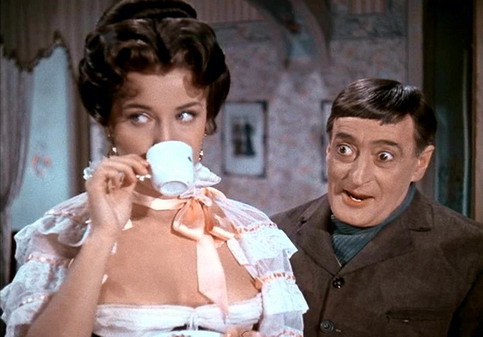 |
(Poverty and nobility) Miseria e nobiltà
|
|
||
|
"Poverty and nobility" 1954 by Mario Mattoli. Subject: from the homonym parody by Eduardo Scarpetta; screen-play: Alberto Boccianti and Piero Filippone; director of production: Alfredo De Laurentis; assistant director: Roberto Cinquini; sound-mixed: Roy Mangano; music by: Pippo Barzizza; editing by: Roberto Cinquini; director of photography: Karl Strauss; filmmaker: Carlo Ponti - Dino De Laurentiis for Excelsa-Roma Film, in ferraniacolor. Starring: Totò (Felice Sciosciammocca), Dolores Palumbo (his wife Luisella), Sofia Loren (Gemma), Valeria Moriconi (Pupella), Enzo Turco (Pasquale), Giovanni Cavalieri (Don Gaetano), Carlo Croccolo (Luigino), Franca Faldini (the milliner), Liana Billi (Concetta), Giuseppe Porelli (the marques Ottavio), Franco Sportelli (the butler), Vera Nandi (the waitress), Franco Pastorino (the marques’ son), Franco Melidoni (Peppiniello), Giulia Melidoni (Bettina), Enzo Petito (don Gioacchino), Dino Curcio (Biase), Nino Di Napoli (the doorman), Nicola Maldacea jr. (the newlywed), Leo Brandi and Franco Caruso (two boors). Plot: Felice and Pasquale live with their families in the same flat and they lead an hard life of quarrelles and poverty. One day the marques Eugenio, in love with Gemma, daughter of an ex cook get rich, proposes to Felice and Pasquale doing the false aristocratic Gemma’s relatives. Wearing wonderful clothes, they play their role and they are received very well. Gemma and Eugenio will get married after a lot of vicissitudes. |
||
|
|
||
Review: The parody by Edoardo Scarpetta has been readapted for the cinema in the 1941, by Corrado D’Errico, with one of Scarpetta son, Vincenzo, in the protagonist role. But in the 1909 it was already put into practice for the small screen by Scarpetta father. It presents again the hunger theme that is a prerogative of the Art Comedy of Pulcinella, joining it to the equivocal game. Really funny the scene with the spaghetti dance, when Totò put them in a pocket as supply. But even the scene of the letter taken down from dictation, scene that advances the very famous sketch in “Totò, Peppino and the bad woman”. This movie is a part of a trilogy dedicated to Scarpetta-Totò and Mattoli that includes “The madmen doctor” and “A Neapolitan Turk”. The hunger and the lack of a job is central in this movie as both Sciosciammocca, a scribe, and his friend Pasquale (the great Enzo Turco), a photographer, chooses unusual jobs, little required, so they live of inactivity and they spend their time pawing their poor clothes or quarrelling due to their forced coexistence. Among their many quarrelles, Turco and Totò give some memorable skits: great is that one about the overcoat of Pasquale’s wedding, when Turco from acting as a foil to Totò, becomes the protagonist, using him as a luxury supporting actor and originating the catchphrase “otherwise desist”, used even in a commercial spot for food products.
Gags and sensational developments follow continuously one after the other, ably managed by Mattoli’s direction, allowing to the actors to vent all their Neapolitan comic charge, from the adults to the young starring Franco Melidoni that plays the role of Peppeniello with his “Vincenzo is father to me”, test-bed of many actors (the same De Filippo brothers were thrower from the same role). In short, this movie doesn’t minimally show the time’s usury, on the contrary it continues to have the same shine of that age, throwing among gibes and gags even pills of wisdom: which is the true nobility? That one of the name or that one of the mind?
Second movie of the “Trilogy” by Scarpetta, “Poverty and Nobility” can be considered the masterpiece of the farcical genre among all Antonio De Curtis performances. If in “A Neapolitan Turk” the allusion to the theatre was evident with the small final curtain, at the end of the movie, giving the illusion to have attended a stage play, in “Poverty and Nobility” the reference is predated and declared, it becomes out-and-out language, revealing Mattoli intention to want to make the true stage play (just the Scarpetta parody) simply shooting it. The illusion is made perfect by the exhibit of the till wall chart, with single seats prices and the theatre programme. When the curtain opens, with a slow zoom, the camera moves closer to the stage setting until getting it. Just then spectacle begins. Actually “Poverty and Nobility”, in respect to “A Neapolitan Turk”, is a further step, radical and extreme, of Mattoli poetic works, aiming to bring back the cinema into the theatre: there aren’t real scenes outside because everything is visibly showed and even boasted as theatre. The movie boils down to three fixed scenes: Sciosciammocca house, the alley adjacent S. Carlino theatre (one more allusion) and Don Gaetano house. In a such a evident theatrical contest, De Curtis gives the best of his enormous resources as actor, applied to the farcical genre. In a parody as this one, lacking of an ideological base and built on a good-natured, courteous and ironic debasing of human defects, De Curtis moves with a big freedom, taking off all realistic features from his face and his mimicry and distorting the performance in expressionistic terms. Scripted as well as by Mattoli, by Ruggero Maccari too (one of “Commedia all’Italiana” father), the movie tends to blend, from the stylistic point of view, the Commedia dell’Arte and the Neapolitan sceneggiata. The vaudeville and the pochade. The characters qualities are well outlined and the story develops according to a classical plot, where pretences, double-dealings, final recognitions, deceits, opposed loves and mistaken identities are this story ingredients. Recovering the features from many previous movies, the character of Sciosciammocca in “Poverty and Nobility” promotes the hunger theme to a level of scenic apotheosis almost metaphysical (Felice declares to want to get married with the cook). All tongs of the starring spring up as a CR with reference to the hunger and the food only, so it becomes the main motive of the story. Totò is perfect as get legitimate to play in the theatre with no mediation. His usher is mobile and plastic, it is transformed also deeply depending on the frame of mind, with never loosing the focal point that is the hunger, the misery, etc, but especially the courteous irony with which these ones are treated and showed. |
|
| Home | Biografia | Locandine | Film cinema | Film montaggio | Film TV | Fumetti | Foto | Teatro | I nomi | Le spalle | |
|
| 'A livella | Poesie | Home video | DVD | Critica | Canzoni | Desktop | Cartoline | Libri | Il baule di Totò | I santini di Totò | |
IL PIANETA TOTO' - www.antoniodecurtis.org Portale
interamente dedicato ad Antonio De Curtis > contatti <